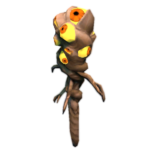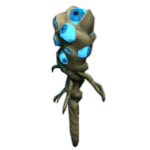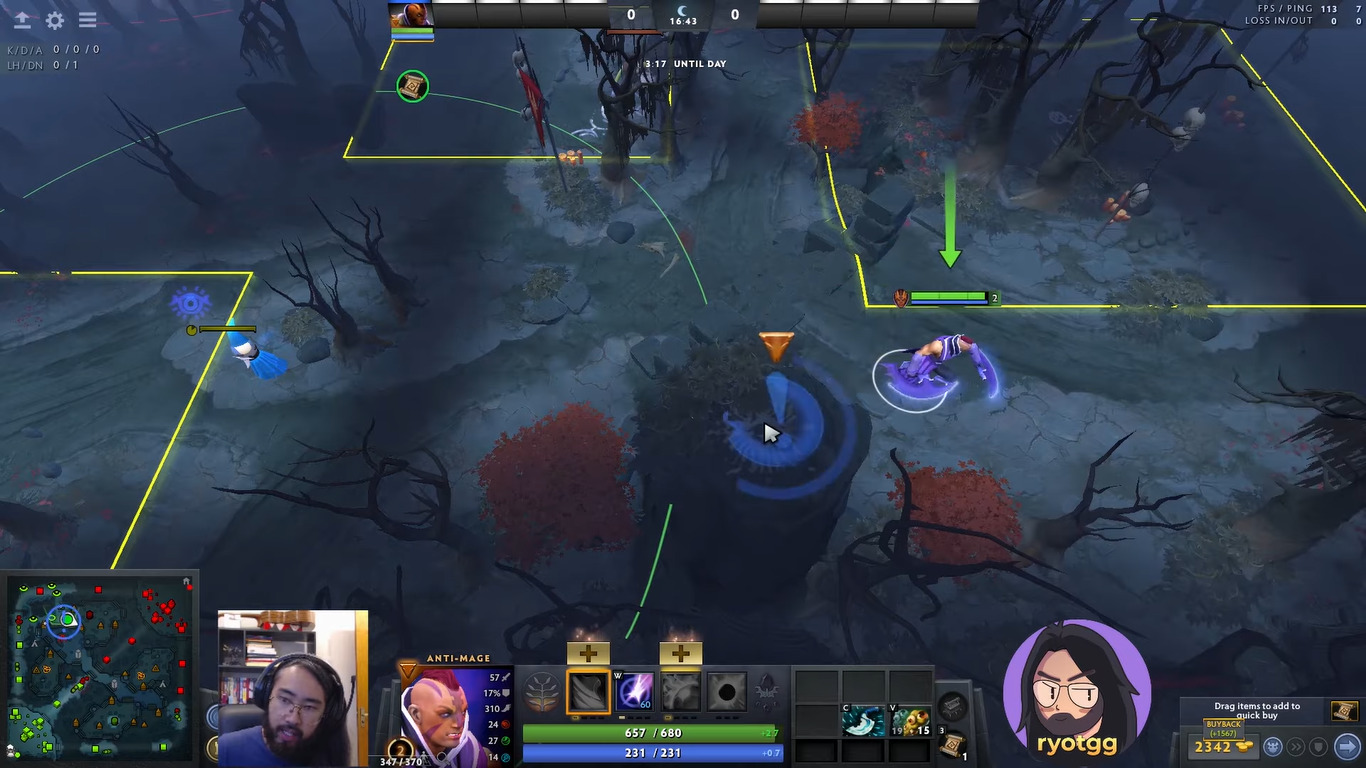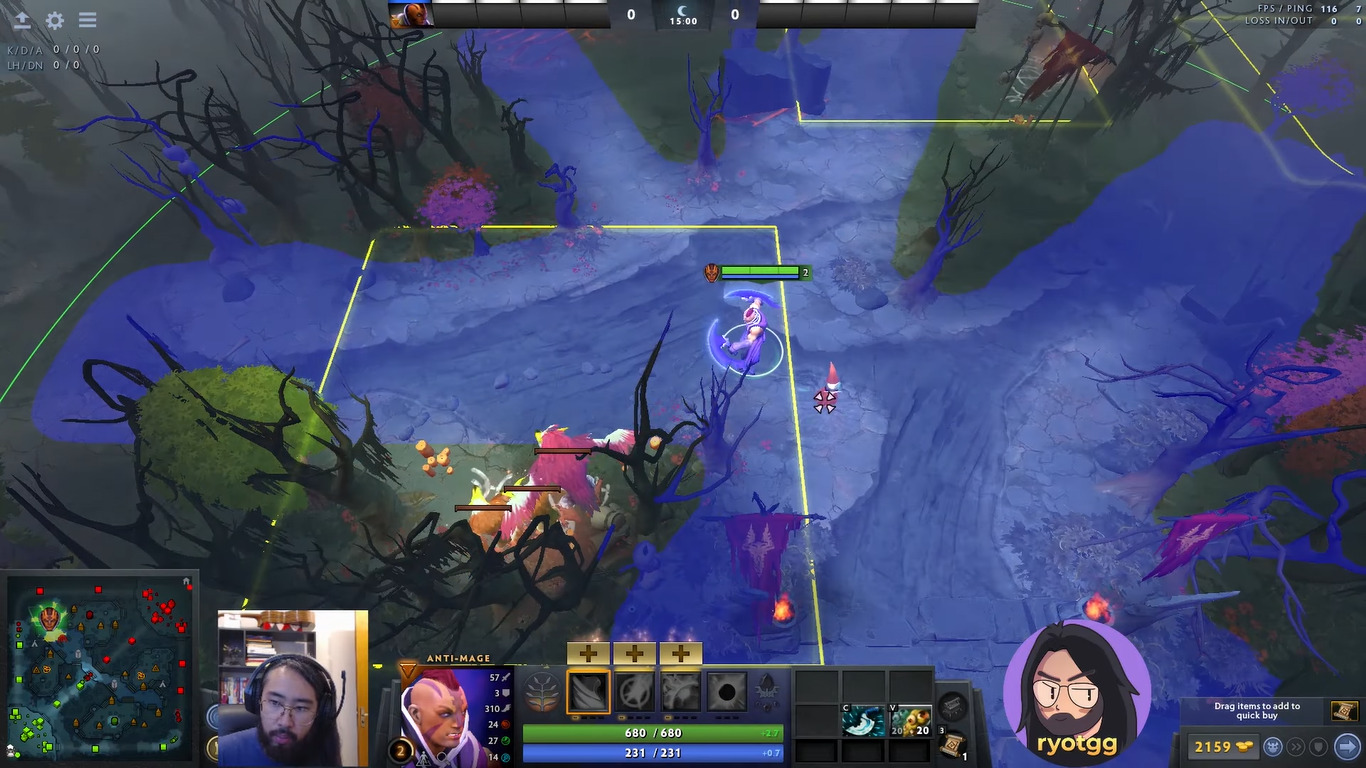By André Demenech, on january 04th, 2023.
This blogpost was originally written in Brazilian Portuguese, and you can find it in Como wardar e dewardar no Dota 2.
What’s up, folks. This text was originally part of a proposal for Ryotgg from Dota 2 Essencial. Its theme is how to ward and deward in this infamous game. In case you don’t know it yet, it’s a strategy game (whose specific genre is known as MOBA*), in which two teams of five players, controlling the so-called heroes, face each other to conquer the enemy base. Thank you for your presence and I hope the reading is up to par.
*MOBA: Multiplayer Online Battle Arena.
What is a Ward
Our beloved Dota 2 has two very special items:
- Observer Ward;
- And Sentry Ward.
Observer Ward

Which is an item to be planted in a chosen location. Thus, it gives vision of the area to your team for a while.
- radius: 1600 units;
- duration: 6 minutes.
Notice other similar elements: the creeps*, heroes and your team’s buildings, such as towers. By bringing information about what is happening in a region, the vision gives you a strategic advantage over the enemy, helping to determine what you can and cannot do there.
*Creeps: units periodically sent from one base to attack the other.
Sentry Ward

Which is another item to be planted. On the other hand, it provides True Sight.
- radius: 900 units;
- duration: 7 minutes;
Both the Observer and Sentry Wards are invisible. They can only be seen with True Sight. An ability shared between the Sentry, Gem of True Sight*, towers, etc. Which, among other things, allows you to see invisible elements.
Similar to the Ward, the Sentry’s True Sight gives you a strategic advantage. With it, you can defend yourself against the dangers of an enemy Ward. But not only that: you can practice deception, which is usually key to victory.
Suppose planting a Sentry, for example, reveals an enemy Ward. Instead of removing it, leave it there, so that the opposing team thinks you don’t have control of the situation (and use it as bait). However, a synergetic team is needed for this to work. You have been warned (lol).
*Gem of True Sight: in-game item, which grants True Sight.
How to ward
First, acquire a Ward (it’s free). Put it in your inventory, click on it and finally choose a place to plant it on the ground. Easy, isn’t it? But that’s the point: the where. Which could be on a pillar, for example.

To keep the story short, the pillar is a pattern on the Dota 2 map. And as it is located on high ground, the visibility of a Ward planted there is not obstructed by trees. It’s the biggest you can get on the map. And also the most cliché. That is: the enemy support (one of the jobs on a team) most likely knows as much that you are going to put a Ward there as he’s going to take it out.
So, one of the prerequisites when it comes to planting a good Ward, as well as when playing Dota, is to anticipate your opponent’s moves. Exactly like in chess. Instead of placing the Ward on the pillar, in that case, choose a spot around it. That it is outside the likely zone of a Sentry, while giving as much information as possible about that region. As in the example below.

Why to ward the map
While it may seem like a rhetorical question, it’s not. It took me a while to begin to understand the strategic advantage of having vision on the map. For me, it was all about being there, hitting the creeps and killing the enemy heroes. And it worked, you know? But the fact is that the vision over the map in Dota 2 gives you information. This, in turn, is a strategic advantage. Because the information helps you to decide correctly what to do.
If you’re in a lane* and you notice that one or more members of the enemy team have disappeared from the map, a risk suddenly arises: “will I be ganked*?” But, by leaving the lane unnecessarily, you lose farm*. Another risk. A Ward, in this case, increases the information available to make a more assertive decision. It doesn’t exhaust the subject, because the enemy can still gank you with smoke. But can you see how it impacts the situation? Providing you with more information and certainty for decision-making.
Therefore, the purpose of warding the map is to obtain information.
“The purpose of warding the map is to obtain information.”
Which is a search for strategic advantage. We can summarize the success of this operation in a few situations:
- avoid a gank;
- prepare for a fight;
- gank an enemy;
- conquer an objective, e.g., destroy a tower;
- secure a rune*;
- among others.
*Lane: There are three main paths in the form of a line between one base and another in Dota 2, known as lanes.
*Ganked: from to gank. It is a term to define an event, also known as pickoff, when a group of players from a team hunts a smaller from the other. It is very common, in this situation, to use an item called Smoke of Deceit, which prevents enemy Wards and Sentries from locating you.
*Farm: in Dota, accumulating resources (gold, which is earned by killing enemies), is one of the main objectives, because it is a determining factor in the chances of victory. One of the (occasionally) safe ways to do so is by eliminating enemy creeps, which is called farm.
*Rune: a game element that can be acquired by a hero to grant a temporary advantage. Like the double damage rune (DD), which doubles the amount of physical damage your hero deals.
What did you think of this post? I’m probably biased to say this, but I think it was well written! Do you need a writer? Get in touch with me via my email, andre.demenech@gmail.com, or my LinkedIn. You will also find more information about my work on my homepage. Thanks for being here, ok? It’s an honor to me. See you next time!
2021 André Demenech | Unavailable terms
Writer, advertising professional and more
How to ward and deward in Dota 2
By André Demenech, on january 04th, 2023.
This blogpost was originally written in Brazilian Portuguese, and you can find it in Como wardar e dewardar no Dota 2.
What’s up, folks. This text was originally part of a proposal for Ryotgg from Dota 2 Essencial. Its theme is how to ward and deward in this infamous game. In case you don’t know it yet, it’s a strategy game (whose specific genre is known as MOBA*), in which two teams of five players, controlling the so-called heroes, face each other to conquer the enemy base. Thank you for your presence and I hope the reading is up to par.
*MOBA: Multiplayer Online Battle Arena.
What is a Ward
Our beloved Dota 2 has two very special items:
- Observer Ward;
- And Sentry Ward.
Observer Ward

Which is an item to be planted in a chosen location. Thus, it gives vision of the area to your team for a while.
- radius: 1600 units;
- duration: 6 minutes.
Notice other similar elements: the creeps*, heroes and your team’s buildings, such as towers. By bringing information about what is happening in a region, the vision gives you a strategic advantage over the enemy, helping to determine what you can and cannot do there.
*Creeps: units periodically sent from one base to attack the other.
Sentry Ward

Which is another item to be planted. On the other hand, it provides True Sight.
- radius: 900 units;
- duration: 7 minutes;
Both the Observer and Sentry Wards are invisible. They can only be seen with True Sight. An ability shared between the Sentry, Gem of True Sight*, towers, etc. Which, among other things, allows you to see invisible elements.
Similar to the Ward, the Sentry’s True Sight gives you a strategic advantage. With it, you can defend yourself against the dangers of an enemy Ward. But not only that: you can practice deception, which is usually key to victory.
Suppose planting a Sentry, for example, reveals an enemy Ward. Instead of removing it, leave it there, so that the opposing team thinks you don’t have control of the situation (and use it as bait). However, a synergetic team is needed for this to work. You have been warned (lol).
*Gem of True Sight: in-game item, which grants True Sight.
How to ward
First, acquire a Ward (it’s free). Put it in your inventory, click on it and finally choose a place to plant it on the ground. Easy, isn’t it? But that’s the point: the where. Which could be on a pillar, for example.

To keep the story short, the pillar is a pattern on the Dota 2 map. And as it is located on high ground, the visibility of a Ward planted there is not obstructed by trees. It’s the biggest you can get on the map. And also the most cliché. That is: the enemy support (one of the jobs on a team) most likely knows as much that you are going to put a Ward there as he’s going to take it out.
So, one of the prerequisites when it comes to planting a good Ward, as well as when playing Dota, is to anticipate your opponent’s moves. Exactly like in chess. Instead of placing the Ward on the pillar, in that case, choose a spot around it. That it is outside the likely zone of a Sentry, while giving as much information as possible about that region. As in the example below.

Why to ward the map
While it may seem like a rhetorical question, it’s not. It took me a while to begin to understand the strategic advantage of having vision on the map. For me, it was all about being there, hitting the creeps and killing the enemy heroes. And it worked, you know? But the fact is that the vision over the map in Dota 2 gives you information. This, in turn, is a strategic advantage. Because the information helps you to decide correctly what to do.
If you’re in a lane* and you notice that one or more members of the enemy team have disappeared from the map, a risk suddenly arises: “will I be ganked*?” But, by leaving the lane unnecessarily, you lose farm*. Another risk. A Ward, in this case, increases the information available to make a more assertive decision. It doesn’t exhaust the subject, because the enemy can still gank you with smoke. But can you see how it impacts the situation? Providing you with more information and certainty for decision-making.
Therefore, the purpose of warding the map is to obtain information.
“The purpose of warding the map is to obtain information.”
Which is a search for strategic advantage. We can summarize the success of this operation in a few situations:
- avoid a gank;
- prepare for a fight;
- gank an enemy;
- conquer an objective, e.g., destroy a tower;
- secure a rune*;
- among others.
*Lane: There are three main paths in the form of a line between one base and another in Dota 2, known as lanes.
*Ganked: from to gank. It is a term to define an event, also known as pickoff, when a group of players from a team hunts a smaller from the other. It is very common, in this situation, to use an item called Smoke of Deceit, which prevents enemy Wards and Sentries from locating you.
*Farm: in Dota, accumulating resources (gold, which is earned by killing enemies), is one of the main objectives, because it is a determining factor in the chances of victory. One of the (occasionally) safe ways to do so is by eliminating enemy creeps, which is called farm.
*Rune: a game element that can be acquired by a hero to grant a temporary advantage. Like the double damage rune (DD), which doubles the amount of physical damage your hero deals.
What did you think of this post? I’m probably biased to say this, but I think it was well written! Do you need a writer? Get in touch with me via my email, andre.demenech@gmail.com, or my LinkedIn. You will also find more information about my work on my homepage. Thanks for being here, ok? It’s an honor to me. See you next time!
2021 André Demenech | Unavailable terms
How to ward and deward in Dota 2
By André Demenech, on january 04th, 2023.
This blogpost was originally written in Brazilian Portuguese, and you can find it in Como wardar e dewardar no Dota 2.
What’s up, folks. This text was originally part of a proposal for Ryotgg from Dota 2 Essencial. Its theme is how to ward and deward in this infamous game. In case you don’t know it yet, it’s a strategy game (whose specific genre is known as MOBA*), in which two teams of five players, controlling the so-called heroes, face each other to conquer the enemy base. Thank you for your presence and I hope the reading is up to par.
*MOBA: Multiplayer Online Battle Arena.
What is a Ward
Our beloved Dota 2 has two very special items:
- Observer Ward;
- And Sentry Ward.
Observer Ward

Which is an item to be planted in a chosen location. Thus, it gives vision of the area to your team for a while.
- radius: 1600 units;
- duration: 6 minutes.
Notice other similar elements: the creeps*, heroes and your team’s buildings, such as towers. By bringing information about what is happening in a region, the vision gives you a strategic advantage over the enemy, helping to determine what you can and cannot do there.
*Creeps: units periodically sent from one base to attack the other.
Sentry Ward

Which is another item to be planted. On the other hand, it provides True Sight.
- radius: 900 units;
- duration: 7 minutes;
Both the Observer and Sentry Wards are invisible. They can only be seen with True Sight. An ability shared between the Sentry, Gem of True Sight*, towers, etc. Which, among other things, allows you to see invisible elements.
Similar to the Ward, the Sentry’s True Sight gives you a strategic advantage. With it, you can defend yourself against the dangers of an enemy Ward. But not only that: you can practice deception, which is usually key to victory.
Suppose planting a Sentry, for example, reveals an enemy Ward. Instead of removing it, leave it there, so that the opposing team thinks you don’t have control of the situation (and use it as bait). However, a synergetic team is needed for this to work. You have been warned (lol).
*Gem of True Sight: in-game item, which grants True Sight.
How to ward
First, acquire a Ward (it’s free). Put it in your inventory, click on it and finally choose a place to plant it on the ground. Easy, isn’t it? But that’s the point: the where. Which could be on a pillar, for example.

To keep the story short, the pillar is a pattern on the Dota 2 map. And as it is located on high ground, the visibility of a Ward planted there is not obstructed by trees. It’s the biggest you can get on the map. And also the most cliché. That is: the enemy support (one of the jobs on a team) most likely knows as much that you are going to put a Ward there as he’s going to take it out.
So, one of the prerequisites when it comes to planting a good Ward, as well as when playing Dota, is to anticipate your opponent’s moves. Exactly like in chess. Instead of placing the Ward on the pillar, in that case, choose a spot around it. That it is outside the likely zone of a Sentry, while giving as much information as possible about that region. As in the example below.

Why to ward the map
While it may seem like a rhetorical question, it’s not. It took me a while to begin to understand the strategic advantage of having vision on the map. For me, it was all about being there, hitting the creeps and killing the enemy heroes. And it worked, you know? But the fact is that the vision over the map in Dota 2 gives you information. This, in turn, is a strategic advantage. Because the information helps you to decide correctly what to do.
If you’re in a lane* and you notice that one or more members of the enemy team have disappeared from the map, a risk suddenly arises: “will I be ganked*?” But, by leaving the lane unnecessarily, you lose farm*. Another risk. A Ward, in this case, increases the information available to make a more assertive decision. It doesn’t exhaust the subject, because the enemy can still gank you with smoke. But can you see how it impacts the situation? Providing you with more information and certainty for decision-making.
Therefore, the purpose of warding the map is to obtain information.
“The purpose of warding the map is to obtain information.”
Which is a search for strategic advantage. We can summarize the success of this operation in a few situations:
- avoid a gank;
- prepare for a fight;
- gank an enemy;
- conquer an objective, e.g., destroy a tower;
- secure a rune*;
- among others.
*Lane: There are three main paths in the form of a line between one base and another in Dota 2, known as lanes.
*Ganked: from to gank. It is a term to define an event, also known as pickoff, when a group of players from a team hunts a smaller from the other. It is very common, in this situation, to use an item called Smoke of Deceit, which prevents enemy Wards and Sentries from locating you.
*Farm: in Dota, accumulating resources (gold, which is earned by killing enemies), is one of the main objectives, because it is a determining factor in the chances of victory. One of the (occasionally) safe ways to do so is by eliminating enemy creeps, which is called farm.
*Rune: a game element that can be acquired by a hero to grant a temporary advantage. Like the double damage rune (DD), which doubles the amount of physical damage your hero deals.
What did you think of this post? I’m probably biased to say this, but I think it was well written! Do you need a writer? Get in touch with me via my email, andre.demenech@gmail.com, or my LinkedIn. You will also find more information about my work on my homepage. Thanks for being here, ok? It’s an honor to me. See you next time!